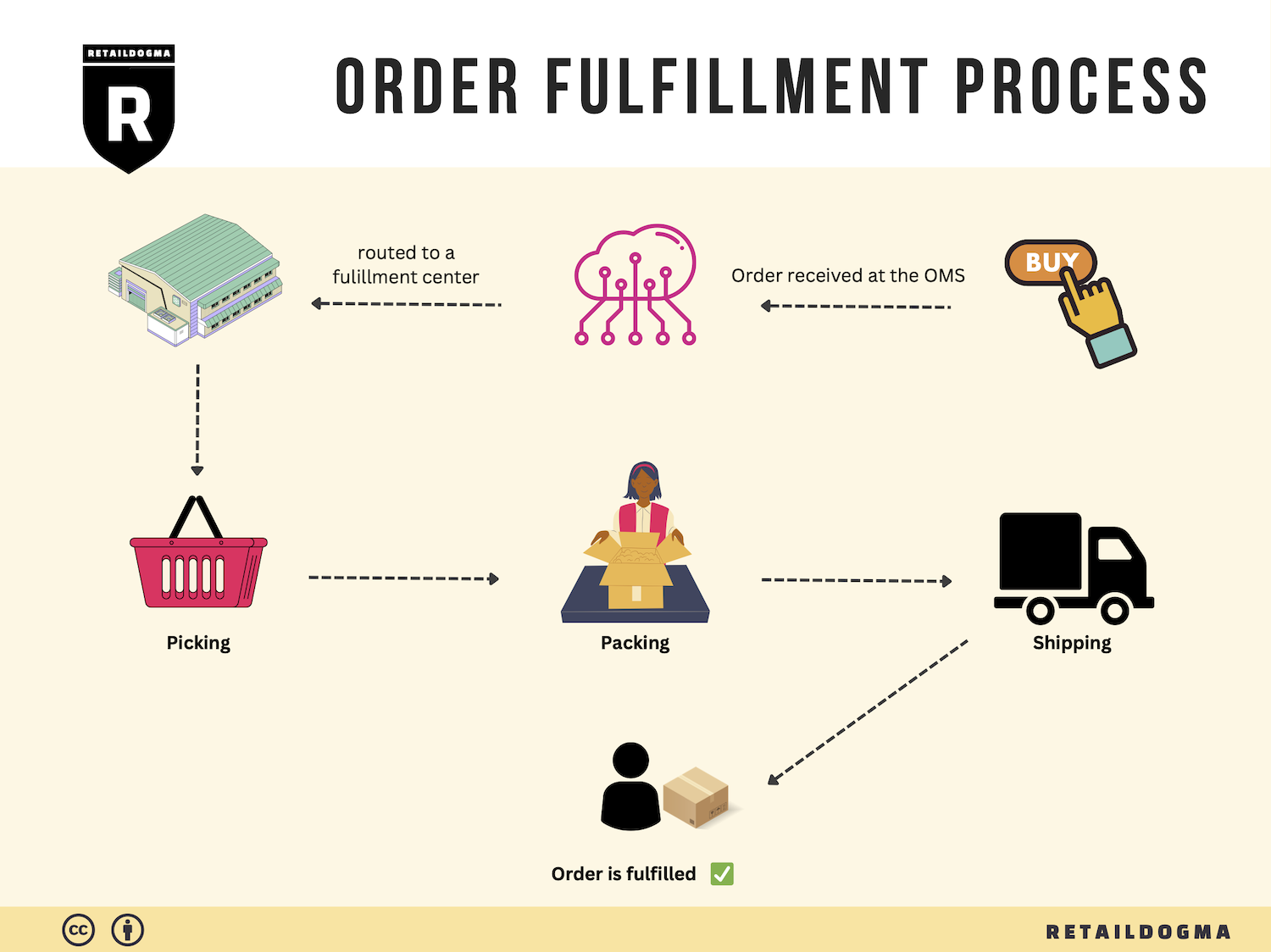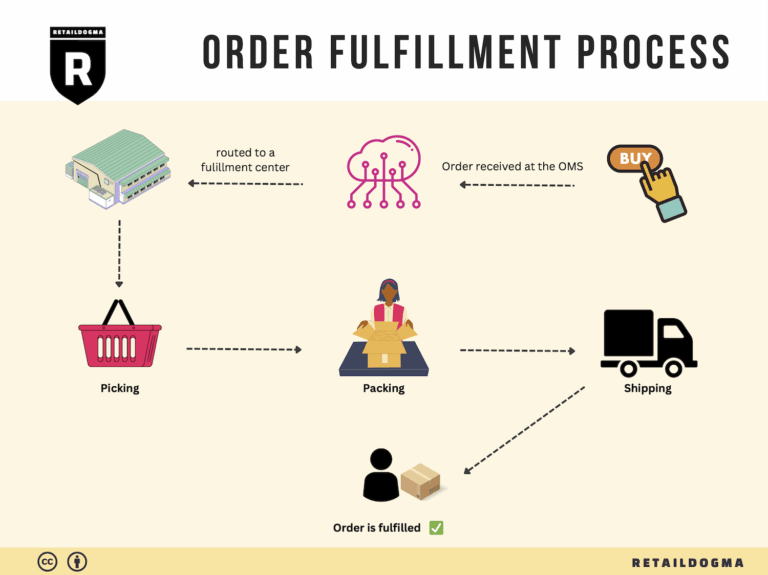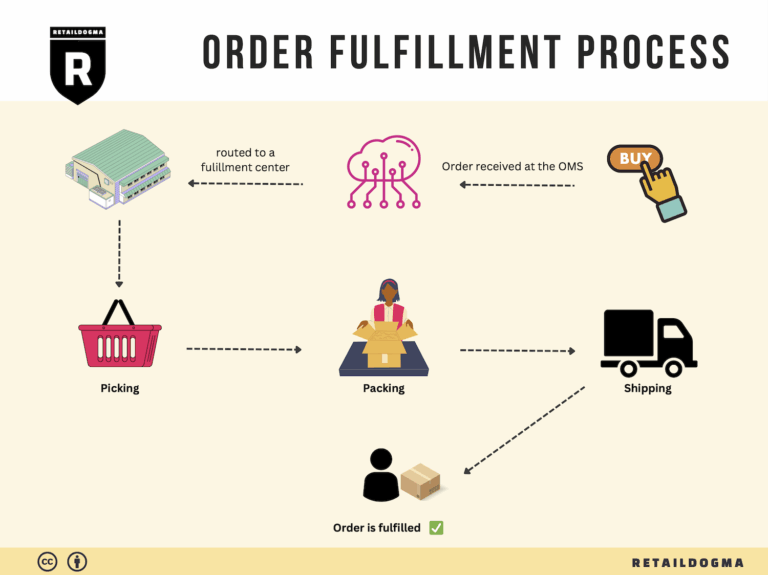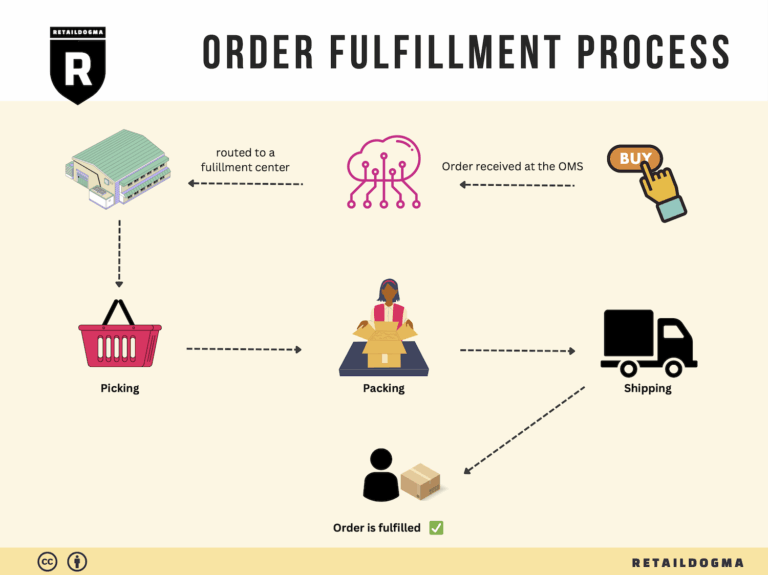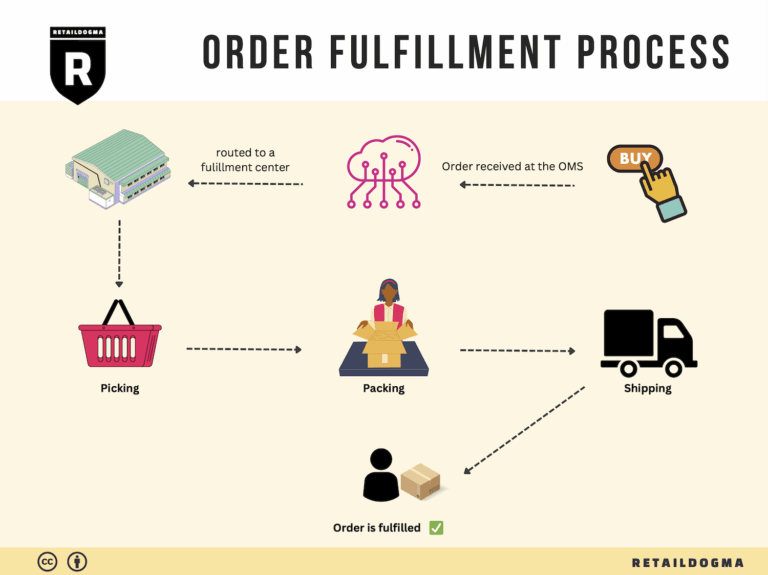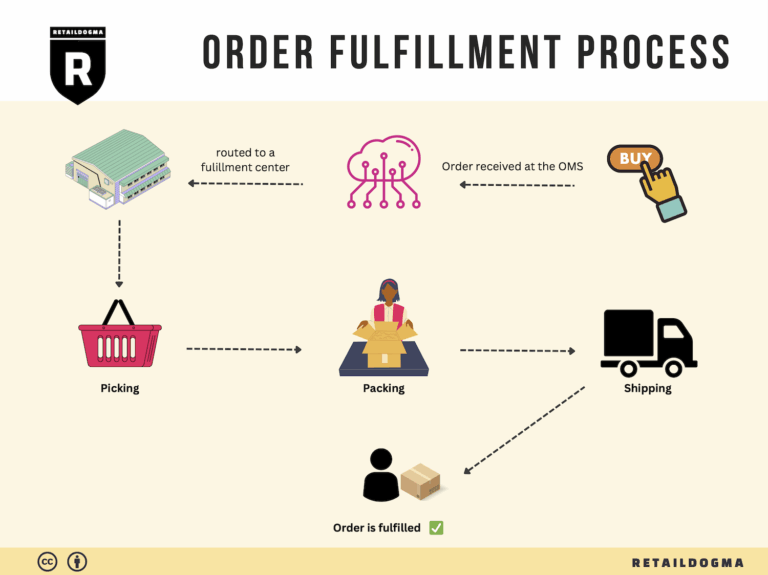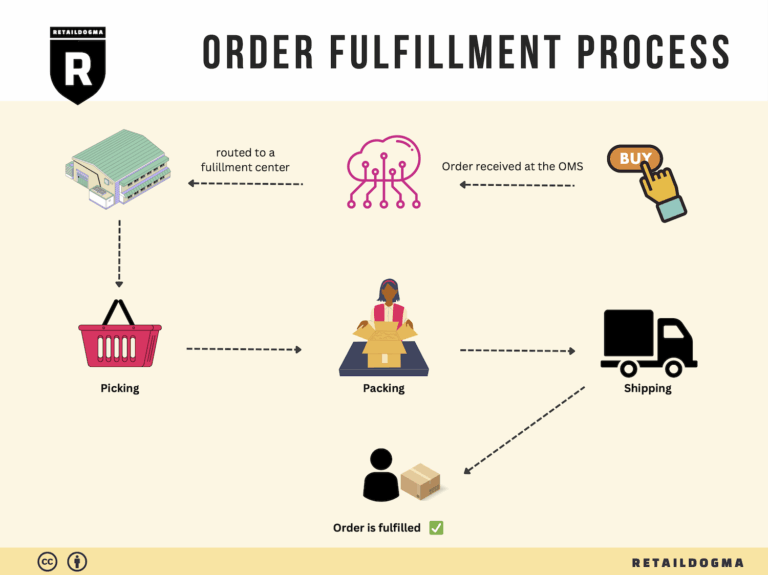What Is A Fulfillment Center? A Complete Guide (2025)
What is E-commerce Fulfillment? An Introduction for Growing Businesses
Introduction to E-commerce Fulfillment
As an e-commerce business owner, one of the most common challenges you may face is managing the complexities of packing and shipping orders. The excitement of growing sales can quickly turn into a logistical nightmare as order volume increases, leading to overwhelmed staff, delayed shipments, and frustrated customers. This is where effective fulfillment strategies come into play.
E-commerce fulfillment is fundamentally the process of getting a product from your warehouse or store into the hands of your customers. It encompasses various stages, including inventory management, order processing, picking, packing, and shipping. Understanding and optimizing this process is crucial for maintaining customer satisfaction and driving business growth.
In this guide, we will explore the different models of e-commerce fulfillment available to growing businesses. We will delve into traditional methods, such as utilizing a third-party logistics provider (3PL), as well as the increasingly popular Fulfillment by Amazon (FBA) model. Each option has its own set of benefits and challenges, and knowing which model aligns with your business goals is essential.
We will also cover the core services that fulfillment partners typically offer. This includes not only the physical act of shipping but also inventory management, returns processing, and customer service. Understanding these services can help you identify which partner is best suited to meet your needs.
Choosing the right fulfillment partner is a critical decision that can impact your operational efficiency and customer experience. We’ll provide insights on key factors to consider when evaluating potential partners, such as their location, technology, scalability, and customer support.
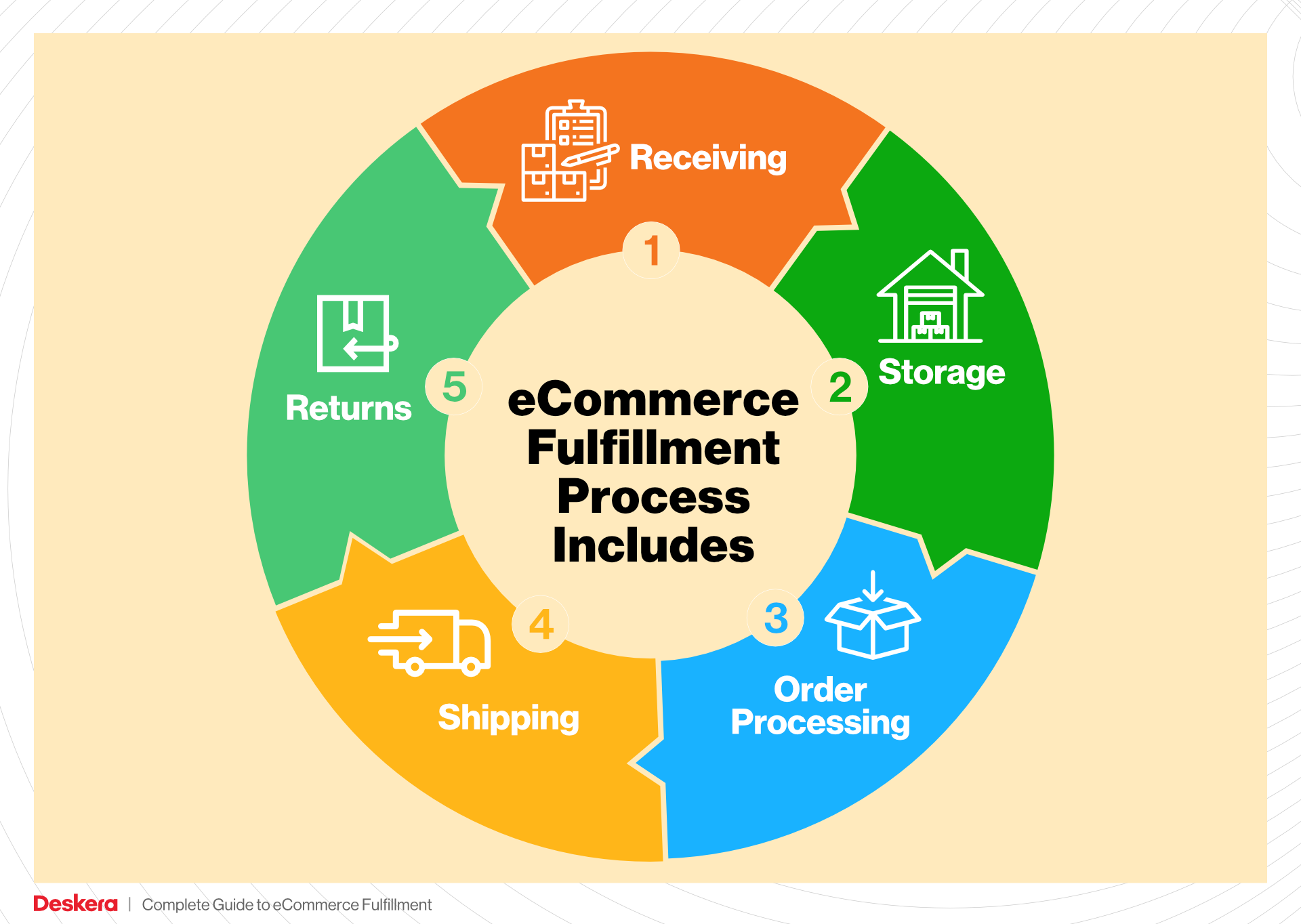
Finally, pricing is a crucial aspect of fulfillment that can significantly affect your bottom line. We will break down common pricing structures and provide guidance on how to assess costs relative to the value offered.
The goal of this guide is to empower you, as a business owner or operations manager, to make informed decisions about your logistics strategy. By understanding the nuances of e-commerce fulfillment, you can streamline your operations, enhance customer satisfaction, and ultimately scale your business effectively. Let’s dive in and explore the world of e-commerce fulfillment together.
What You’ll Learn In This Guide
- What is E-commerce Fulfillment? An Introduction for Growing Businesses
- The Order Fulfillment Process: From ‘Buy’ Button to Customer’s Door
- Comparing Fulfillment Models: In-House vs. 3PL vs. Dropshipping
- A Deep Dive into Amazon FBA: Pros, Cons, and Who It’s For
- Core Services Offered by Fulfillment Centers
- How to Choose a Fulfillment Partner: A 6-Point Checklist
- Understanding Fulfillment Pricing: A Breakdown of Common Fees
- Frequently Asked Questions (FAQs) about Fulfillment
- Conclusion: Is Outsourcing Fulfillment the Right Move for Your Business?
- Important Disclaimer
The Order Fulfillment Process: From ‘Buy’ Button to Customer’s Door
1. Receiving Inventory
The first step in the order fulfillment process is receiving inventory at the fulfillment center. This process begins when products arrive at the facility, typically transported by freight trucks. Upon arrival, the inventory is unloaded and checked against shipping documentation to ensure accuracy. This step is crucial because discrepancies can lead to stockouts or overstock situations, impacting customer satisfaction and overall business efficiency.
During this stage, each item is assigned a Stock Keeping Unit (SKU), a unique identifier that facilitates tracking and management throughout the fulfillment process. Proper receiving practices ensure that inventory is accounted for and ready for storage, which sets the foundation for effective order fulfillment.
2. Warehouse Storage
Once the inventory is received, it is stowed within the warehouse for future order fulfillment. This process involves organizing products in a way that maximizes space and accessibility. Effective storage strategies can vary; some fulfillment centers use a systematic approach based on product type or size, while others may adopt a chaotic storage method that places items wherever space allows, relying on technology to track locations.
The importance of this step lies in efficient inventory management. Properly stored products reduce the time required for subsequent steps in the fulfillment process. Technologies such as barcode scanning and inventory management systems play a vital role here, allowing staff to quickly locate items when orders are placed, thereby enhancing operational efficiency.
3. Order Picking
When a customer places an order, the fulfillment center generates a picking list, which is a document that outlines the items required to fulfill that order. This list is then assigned to pickers, who are responsible for retrieving the items from storage. The picking process can vary significantly; for example, Amazon employs robotics to bring storage pods to picking stations, where associates can easily access the required items.
The significance of order picking cannot be overstated. It is a critical phase that directly impacts order accuracy and speed. If items are picked incorrectly, it can lead to customer dissatisfaction and increased return rates. Therefore, investing in efficient picking technologies and processes is essential for businesses aiming to scale their operations successfully.
4. Order Packing
Once items are picked, they move to the packing stage, where they are prepared for shipment. This involves checking the items against the order to ensure accuracy, followed by placing them into appropriate packaging. The packing process is vital because it protects items during transit and helps minimize shipping costs by optimizing box sizes. Advanced fulfillment centers often utilize automated systems that suggest the best box size and amount of packing materials required for each order.
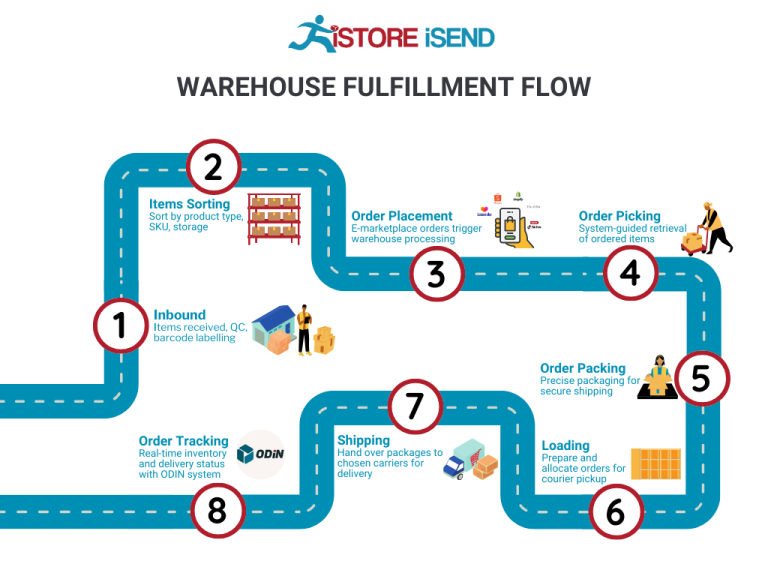
Effective packing practices not only ensure the protection of goods but also contribute to sustainability efforts by minimizing waste. This is increasingly important for customers who value eco-friendly practices. By streamlining this process, businesses can improve their overall shipping efficiency and reduce costs, which can significantly impact their bottom line.
5. Shipping & Delivery
The final step in the order fulfillment process is shipping and delivery. After packing, orders are labeled and sorted based on their destination and shipping method. Advanced technologies, such as SLAM (scan, label, apply, manifest) systems, are often employed to automate this process, ensuring that packages are labeled accurately and quickly.
Shipping is a critical component of customer satisfaction. The faster and more reliable the delivery, the more likely customers are to return for future purchases. Fulfillment centers like Amazon strategically use a diversified fleet of delivery options, ranging from local carriers to air transport, ensuring that they can meet various delivery timelines, including expedited services for Prime members.
In summary, the order fulfillment process from receiving inventory to shipping and delivery is a multi-faceted operation that requires careful management and strategic planning. By understanding and optimizing each step, e-commerce businesses can enhance their efficiency, improve customer satisfaction, and ultimately scale their operations effectively.
Comparing Fulfillment Models: In-House vs. 3PL vs. Dropshipping
Fulfillment Models Comparison Table
| Model | Who Handles Inventory | Best For (Business Stage) | Key Advantage | Key Disadvantage |
|---|---|---|---|---|
| In-House Fulfillment | The business itself | Established businesses | Full control over inventory and processes | High overhead costs and resource-intensive |
| Third-Party Logistics (3PL) | A third-party provider | Growing businesses | Scalability and reduced operational burden | Less control over inventory and fulfillment timing |
| Dropshipping | Suppliers | Startups and small businesses | Low upfront investment and no inventory risk | Lower profit margins and reliance on supplier quality |
In-House Fulfillment
In-house fulfillment is a model where the e-commerce business manages all aspects of the fulfillment process internally. This includes receiving inventory, storage, order processing, picking, packing, and shipping. This model is best suited for established businesses that have a stable inventory flow and sufficient resources to handle logistics. The primary advantage of in-house fulfillment is the complete control it offers over the entire supply chain. Businesses can tailor processes to meet their specific needs, ensuring a consistent customer experience and potentially improving efficiency through custom solutions. However, the key disadvantage is the high overhead costs associated with staffing, warehousing, and technology infrastructure. In-house fulfillment can also be resource-intensive, requiring significant time and attention from management, which can detract from focusing on core business activities.
Third-Party Logistics (3PL)
Third-party logistics (3PL) involves outsourcing fulfillment operations to specialized logistics providers. In this model, a third-party company handles inventory storage, order processing, packing, and shipping on behalf of the e-commerce business. This model is particularly beneficial for growing businesses that are experiencing increased order volumes but may not have the resources to expand their in-house operations. The key advantage of 3PL is scalability; businesses can easily adjust their logistics operations based on fluctuating demand without the need for significant capital investment. Additionally, utilizing a 3PL provider can free up internal resources, allowing businesses to focus on marketing, product development, and other strategic areas. However, the downside is that businesses relinquish some control over their inventory and fulfillment processes, which can lead to variability in service quality and fulfillment timing. Effective communication and partnership with the 3PL provider are essential to mitigate these risks.
Dropshipping
Dropshipping is a fulfillment model where the e-commerce business does not hold inventory but instead relies on suppliers to ship products directly to customers. When a customer places an order, the retailer forwards the order details to the supplier, who then ships the product directly to the customer. This model is particularly appealing for startups and small businesses that want to minimize their financial risk and avoid the complexities of managing inventory. The main advantage of dropshipping is the low upfront investment required, as there is no need to purchase inventory upfront. This model allows entrepreneurs to test multiple products without the financial burden of unsold stock. However, dropshipping also comes with significant disadvantages, including lower profit margins due to the costs associated with using suppliers, as well as a reliance on supplier quality and shipping times. Businesses must carefully vet suppliers to ensure they can meet customer expectations, as poor supplier performance can directly impact customer satisfaction and brand reputation.
A Deep Dive into Amazon FBA: Pros, Cons, and Who It’s For
Understanding Fulfillment by Amazon (FBA)
Fulfillment by Amazon (FBA) is a service that enables e-commerce sellers to utilize Amazon’s extensive logistics network to store, pack, and ship their products. When sellers enroll in FBA, they send their inventory to Amazon’s fulfillment centers, where Amazon takes over the order fulfillment process. This includes receiving customer orders, picking items from the warehouse, packing them, and shipping them to customers. Additionally, Amazon handles customer service and returns for these orders, allowing sellers to focus on other aspects of their business.
How FBA Works
-
Inventory Preparation: Sellers prepare their products according to Amazon’s guidelines, which include labeling and packaging requirements.
-
Shipping to Fulfillment Centers: Once the inventory is ready, sellers ship their products to Amazon’s fulfillment centers. They can choose to send their items to one or multiple centers based on Amazon’s recommendations.
-
Storage: Amazon stores the products in their warehouses until a customer places an order. The inventory is tracked using sophisticated inventory management systems.
-
Order Fulfillment: When an order is placed, Amazon’s system automatically processes it. Items are picked from the shelves, packed into boxes, and shipped out. Amazon uses advanced technologies like robots and automated systems to enhance efficiency and accuracy.
-
Customer Service: Amazon provides customer service for FBA orders, handling inquiries and returns, which alleviates the burden on sellers.
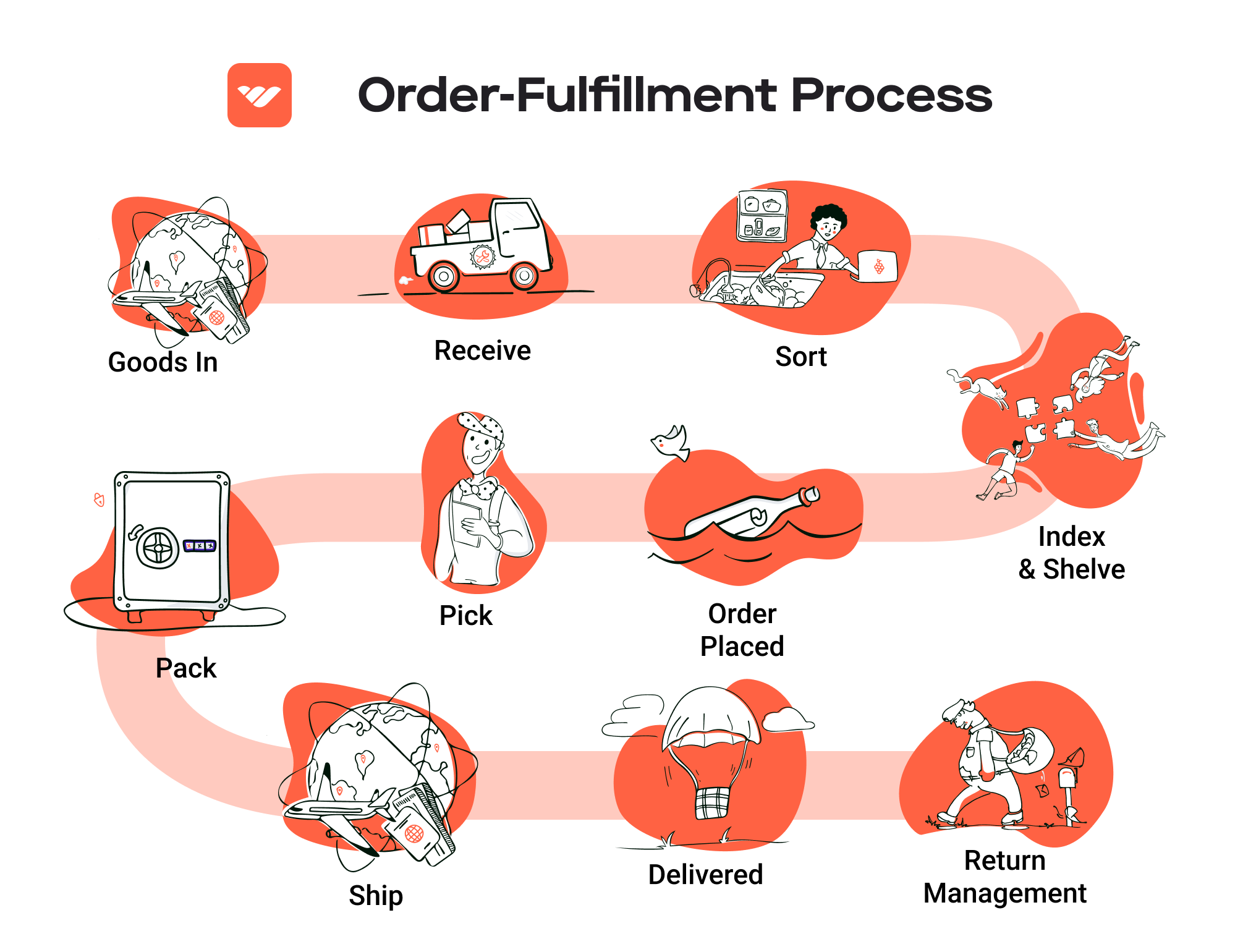
-
Payments: After the sale, sellers receive payments minus Amazon’s fees, which cover storage and fulfillment services.
Pros of Fulfillment by Amazon
Prime Eligibility
One of the most significant advantages of FBA is that it grants sellers access to Amazon Prime. This means that products fulfilled through FBA are eligible for Prime’s two-day shipping, which can significantly increase sales, as Prime members are known to prefer products that offer fast and free shipping.
Customer Trust
When customers see that a product is fulfilled by Amazon, it instills a sense of trust. Amazon is known for its customer service and efficient fulfillment, leading to higher customer satisfaction and potentially more repeat purchases. The trust associated with Amazon can help sellers stand out in a crowded marketplace.
Multi-Channel Fulfillment
FBA also allows for multi-channel fulfillment, meaning sellers can use Amazon’s logistics for orders from other sales channels, such as their own websites or other marketplaces. This streamlines logistics and provides a consistent fulfillment experience across different platforms.
Time Savings
By outsourcing fulfillment to Amazon, sellers can save significant time. They do not have to worry about packing and shipping products themselves, which allows them to focus on growing their business, marketing, and product development.
Scalability
FBA provides an efficient way to scale operations. As sales increase, sellers can leverage Amazon’s vast network of fulfillment centers to handle larger volumes without needing to invest in their own warehousing and logistics infrastructure.
Cons of Fulfillment by Amazon
High Fees
While FBA can save time and provide convenience, it comes at a cost. Amazon charges various fees, including storage fees for inventory and fulfillment fees for each item sold. These fees can add up quickly, particularly for sellers with low-margin products, potentially squeezing their profit margins.
Strict Inventory Rules
Amazon has stringent rules regarding inventory management. Sellers must adhere to specific guidelines for packaging, labeling, and inventory limits. Failing to comply with these rules can lead to additional fees or even suspension of the seller account.
Commingling Risks
When sellers use FBA, their inventory may be commingled with that of other sellers. This means that if a customer receives a defective or damaged product, it could reflect poorly on the seller’s reputation, even if the issue originated from another seller’s inventory. This risk can be mitigated by opting for stickered inventory, but this option may incur additional costs.
Limited Control Over Fulfillment
By using FBA, sellers relinquish control over the fulfillment process. This means they cannot customize packaging or handling based on their brand’s needs. Additionally, issues like stockouts or mis-picks can occur, which can adversely affect customer satisfaction.
Dependency on Amazon
Sellers become reliant on Amazon’s infrastructure and policies. Any changes Amazon makes to its fulfillment processes, fee structures, or policies can directly impact sellers’ businesses. This dependency can be concerning, especially for those looking to build a brand outside of the Amazon ecosystem.
Who is FBA Best For?
Fulfillment by Amazon is particularly beneficial for:
- New Sellers: Those who are new to e-commerce and want to leverage Amazon’s established logistics and customer service.
- High-Volume Sellers: Businesses with a steady stream of sales that can benefit from the efficiency of Amazon’s fulfillment network.
- Sellers with Limited Resources: Entrepreneurs who lack the infrastructure or capital to manage their own warehousing and logistics.
- Brands Focused on Growth: Companies looking to scale quickly can leverage FBA to avoid the complexities of logistics management.
- Retailers Seeking Prime Access: Sellers who want to tap into the lucrative Prime customer base should consider FBA for its shipping advantages.
In conclusion, while Fulfillment by Amazon offers numerous benefits that can help sellers streamline operations and enhance customer satisfaction, it also comes with challenges that require careful consideration. Assessing your business model, product types, and growth plans will help you determine whether FBA is the right fit for your e-commerce strategy.
Core Services Offered by Fulfillment Centers
Inventory Management & Warehousing
Fulfillment centers provide robust inventory management and warehousing solutions that are crucial for e-commerce businesses. This service involves the systematic organization, storage, and tracking of products within the fulfillment center. Utilizing advanced inventory management software, fulfillment centers can monitor stock levels in real-time, ensuring that businesses always know what is available for sale.
Benefits:
-
Optimized Space Utilization: Fulfillment centers are designed to maximize storage efficiency, allowing businesses to store a larger quantity of products in a smaller footprint. This is particularly beneficial for small to medium-sized e-commerce businesses that may lack the resources to maintain their own warehouse.
-
Reduced Overhead Costs: By outsourcing warehousing to a fulfillment center, businesses can significantly reduce operational costs associated with leasing or owning a warehouse, including utilities, maintenance, and staffing.
-
Real-Time Inventory Tracking: With sophisticated inventory management systems, businesses can access real-time data regarding their stock levels. This minimizes the risk of overselling or stockouts, ensuring a seamless customer experience.
-
Efficient Replenishment: Fulfillment centers can alert businesses when inventory levels are low, enabling timely replenishment and preventing potential sales losses due to unavailability of products.
Pick and Pack Services
Pick and pack services are at the heart of the fulfillment process. This service involves selecting items from the warehouse based on customer orders (picking) and then preparing those items for shipment (packing). Fulfillment centers often employ advanced technologies, such as barcode scanning and automated systems, to streamline this process.
Benefits:
-
Speed and Efficiency: Fulfillment centers can process orders much faster than a small business could manage in-house. This speed is crucial for meeting customer expectations, especially in the age of same-day or next-day delivery.
-
Accuracy in Order Fulfillment: Advanced picking systems reduce the chances of errors during order fulfillment. This accuracy leads to higher customer satisfaction and fewer returns due to incorrect orders.
-
Scalability: As e-commerce businesses grow, their order volume may fluctuate significantly. Fulfillment centers can easily scale their pick and pack operations to accommodate increased demand without requiring businesses to hire additional staff.
-
Customized Packaging: Many fulfillment centers offer various packing options tailored to the specific needs of products, ensuring that items are shipped securely and professionally, which enhances brand image.
Kitting and Assembly
Kitting and assembly services involve combining multiple products into a single package or kit before shipping. This can include assembling items, bundling related products, or creating gift sets. Fulfillment centers can handle these tasks efficiently, allowing businesses to offer unique product combinations without the logistical burden.
Benefits:
-
Enhanced Product Offering: By utilizing kitting services, e-commerce businesses can create unique product bundles that attract customers and differentiate them from competitors. This can lead to increased sales and customer loyalty.
-
Time Savings: Outsourcing kitting and assembly to a fulfillment center saves businesses significant time, allowing them to focus on core activities such as marketing and customer engagement.
-
Cost Efficiency: Fulfillment centers can often provide kitting services at a lower cost than businesses can achieve in-house due to their established processes and economies of scale.
-
Simplified Inventory Management: By bundling products, businesses can manage their inventory more efficiently, reducing the complexity of tracking multiple SKUs.
Returns Management (Reverse Logistics)
Returns management, or reverse logistics, refers to the processes involved in handling returned products. Fulfillment centers manage this aspect by inspecting, restocking, and processing returns, allowing e-commerce businesses to maintain customer satisfaction even when issues arise.
Benefits:
-
Streamlined Returns Process: Fulfillment centers can quickly process returns, ensuring that customers receive prompt resolutions. This responsiveness can significantly improve customer satisfaction and retention.
-
Inventory Recovery: Efficient returns management allows businesses to quickly restock returned items, minimizing losses associated with unsold inventory. This is crucial for maintaining healthy cash flow.
-
Data Insights: Fulfillment centers can provide valuable data regarding return reasons and patterns, enabling businesses to identify trends, improve product quality, and enhance customer service strategies.
-
Cost Reduction: By outsourcing returns management, businesses can lower operational costs associated with handling returns in-house, such as staffing and logistics.
In conclusion, partnering with a fulfillment center offers e-commerce businesses a suite of core services that streamline operations, enhance customer satisfaction, and enable scalable growth. By leveraging these services, business owners can focus on strategic initiatives while leaving the complexities of order fulfillment to the experts.
How to Choose a Fulfillment Partner: A 6-Point Checklist
Location & Warehouse Network
Importance:
The geographical location of your fulfillment partner’s warehouses significantly impacts shipping times, costs, and overall customer satisfaction. A partner with a well-distributed network can ensure faster delivery, especially if they have facilities near your target markets.
Questions to Ask:
– Where are your fulfillment centers located, and how many do you operate?
– Can you provide coverage maps that show your service areas?
– How do you handle shipping logistics for international orders?
– Do you have plans for future expansions in key areas?
Technology & Integrations
Importance:
In today’s e-commerce landscape, efficient technology is vital for seamless order processing and inventory management. A fulfillment partner that offers advanced technology can improve accuracy, speed, and visibility throughout the supply chain.
Questions to Ask:
– What order management system (OMS) do you use, and how does it integrate with my e-commerce platform (e.g., Shopify, WooCommerce, Amazon)?
– Do you provide real-time tracking for both inventory and shipments?
– Can your system handle returns and exchanges efficiently?
– How do you manage inventory accuracy, and what technologies do you use to minimize errors?
Specializations (e.g., Cold Storage, Oversized Items)
Importance:
If your products require specific handling or storage conditions—such as cold storage for perishables or specialized packaging for oversized items—selecting a partner with the appropriate expertise is crucial. This specialization ensures compliance with regulations and preserves product integrity.
Questions to Ask:
– Do you have facilities equipped for specific types of products, such as refrigerated or hazardous materials?
– What experience do you have in handling oversized or fragile items?
– How do you ensure compliance with health and safety regulations for specialized products?
– Can you provide case studies or references related to your experience with similar products?
Scalability & Capacity
Importance:
As your business grows, your fulfillment needs will change. A fulfillment partner must be able to scale operations seamlessly to accommodate spikes in order volume, seasonal demands, or expansion into new markets.
Questions to Ask:
– What is your current capacity, and how do you handle peak seasons?
– How quickly can you scale up operations if my order volume increases significantly?
– Do you have contingency plans for unexpected surges in demand?
– Can you provide examples of how you have successfully managed scaling for other clients?
Pricing and Contracts
Importance:
Understanding the pricing structure and contract terms is essential for budgeting and financial forecasting. A transparent pricing model helps avoid unexpected costs and ensures that the partnership remains profitable as your business grows.
Questions to Ask:
– What is your pricing model (e.g., per order, per item, monthly fees)?
– Are there any hidden fees (e.g., for storage, handling, returns)?
– What are the terms for contract renewal, and is there flexibility for short-term agreements?
– How do you handle pricing adjustments in response to inflation or increased operational costs?
Customer Support & Reviews
Importance:
Effective customer support can make or break your partnership with a fulfillment provider. Responsive and knowledgeable support ensures that issues are resolved quickly, minimizing disruption to your operations.
Questions to Ask:
– What level of customer support do you offer (e.g., 24/7, dedicated account manager)?
– Can you provide references or testimonials from current clients?
– How do you handle issues such as order discrepancies, shipping delays, or inventory shortages?
– What channels do you use for customer support (e.g., phone, email, chat), and what is your typical response time?
Conclusion
Choosing the right fulfillment partner is critical for the success of your e-commerce business. By carefully evaluating potential partners based on this checklist, you can ensure that you select a provider that aligns with your operational needs and supports your growth ambitions. Taking the time to ask the right questions and thoroughly assess each aspect of the partnership will pay dividends in customer satisfaction, efficiency, and profitability.
Understanding Fulfillment Pricing: A Breakdown of Common Fees
Initial Setup Fees
When you first begin working with an Amazon fulfillment center, you may incur initial setup fees. These costs can include the onboarding process, which often entails account creation, integration of your inventory systems with Amazon’s platforms, and training on how to use their systems effectively. The setup fee can vary significantly based on the complexity of your inventory and the specific services you require.
To calculate the initial setup fee, consider the following:
- Type of Products: If you have a diverse range of products, additional setup may be necessary to categorize and organize your inventory.
- Integration Needs: If you require custom integration with your existing systems, this can increase costs.
- Training Requirements: Additional training for your team may also add to the initial costs.
Understanding these components will help you anticipate the upfront investment required to start utilizing Amazon’s fulfillment services.
Receiving Fees
Receiving fees are charged when your inventory arrives at an Amazon fulfillment center. These fees cover the labor and resources needed to unload, inspect, and store your products. The cost is typically calculated per unit or per pallet, depending on how your inventory is shipped.
Key factors that influence receiving fees include:
- Volume of Inventory: Larger shipments may benefit from reduced rates per unit, while smaller shipments might incur higher per-unit costs.
- Condition of Products: If your products require special handling or inspection, additional fees may apply.
- Type of Packaging: Bulk shipments can sometimes be more cost-effective compared to individually packaged items.
To manage receiving fees effectively, consider consolidating shipments or ensuring that products arrive in optimal condition to avoid additional handling charges.
Storage Fees (per pallet/bin)
Storage fees are incurred for the time your inventory is held within the fulfillment center. These fees can be charged on a monthly basis and are typically calculated per pallet or bin used. Understanding how storage fees are structured can help you optimize your inventory turnover and reduce holding costs.
Factors that influence storage fees include:
- Volume of Inventory: The more space your products occupy, the higher the storage fees.
- Duration of Storage: Long-term storage (usually over six months) may incur additional fees, so it’s essential to manage your inventory turnover effectively.
- Seasonal Trends: Anticipating peak seasons, such as holidays, can help you adjust your inventory levels to avoid unnecessary storage costs.
By monitoring your inventory levels and planning your restocking strategies, you can minimize storage fees and enhance your overall profitability.
Pick & Pack Fees (per item/order)
Pick and pack fees are charged for the process of selecting items from the fulfillment center, packaging them for shipment, and preparing them for delivery. This fee can vary based on the complexity of the order and the number of items being picked.
Consider the following when evaluating pick and pack fees:
- Order Complexity: More complex orders that require multiple items may incur higher fees than simple single-item orders.
- Special Packaging Requirements: If your products require special packing materials or methods, this can also increase costs.
- Automation and Efficiency: Amazon utilizes automated systems to streamline this process, but if you have unique inventory needs, this may still impact your fees.
To keep pick and pack fees manageable, aim for standardization in your product offerings and packaging, which can simplify the fulfillment process.
Shipping Fees
Shipping fees cover the cost of transporting your products from the fulfillment center to the customer. These fees can vary based on the shipping method chosen, the destination, and the weight and dimensions of the package.
Key considerations for shipping fees include:
- Shipping Speed: Faster shipping options (like Amazon Prime) typically come with higher fees, while standard shipping may be more economical.
- Distance: Longer distances can increase shipping costs, so consider the geographic distribution of your customers.
- Weight and Size: Heavier or oversized packages generally incur higher shipping fees. Ensuring that your products are packaged efficiently can help control these costs.
To minimize shipping fees, evaluate your shipping strategies regularly and consider leveraging Amazon’s shipping options, which may offer discounted rates due to their extensive logistics network.
Tips for Getting an Accurate Quote
To obtain an accurate quote for fulfillment services, consider the following strategies:
- Provide Detailed Inventory Information: Be clear about the types of products you will be storing and shipping, including dimensions and weight.
- Request a Breakdown of Fees: Ask for a detailed breakdown of all potential fees, including setup, receiving, storage, pick and pack, and shipping.
- Understand Your Business Needs: Clearly articulate your business volume and growth projections to help the fulfillment center provide tailored pricing.
- Negotiate Terms: Don’t hesitate to discuss terms and conditions, especially if you expect significant volume, as there may be room for negotiation on fees.
By taking these steps, you can ensure that you are fully informed about the costs associated with using Amazon fulfillment centers, allowing you to make well-informed decisions for your e-commerce business.
Frequently Asked Questions (FAQs) about Fulfillment
1. What is an Amazon Fulfillment Center?
An Amazon fulfillment center is a large warehouse facility where Amazon processes orders for its marketplace. The center receives, stores, picks, packs, and ships products on behalf of sellers who use the Fulfillment by Amazon (FBA) service. This streamlined process allows sellers to leverage Amazon’s extensive logistics network to ensure timely delivery to customers.
2. How does the order fulfillment process work at an Amazon fulfillment center?
The order fulfillment process at an Amazon fulfillment center includes several key steps:
1. Inventory Receiving: Products are received and logged into the system.
2. Inventory Storage: Items are stored in designated locations within the facility.
3. Order Processing: When a customer places an order, the fulfillment center retrieves the items.
4. Order Picking: Workers or robots pick the correct items from the shelves.
5. Order Packing: Items are packed into appropriate boxes using minimal packaging materials.
6. Order Shipping: Packed orders are labeled and dispatched via various shipping methods based on delivery speed requirements.
3. What’s the difference between a warehouse and a fulfillment center?
While both warehouses and fulfillment centers store products, their primary functions differ. A warehouse is mainly for storage and inventory management, focusing on holding goods for long periods. In contrast, a fulfillment center is designed for processing and shipping orders quickly, emphasizing efficiency and speed in the order fulfillment process. Fulfillment centers also handle customer service, which warehouses typically do not.
4. What is a 3PL?
A 3PL, or third-party logistics provider, is a service that manages logistics and fulfillment operations for businesses. This can include warehousing, inventory management, order processing, and shipping. Many e-commerce businesses partner with 3PLs to streamline their logistics without having to manage their own fulfillment operations, allowing them to focus on growth and customer engagement.
5. How much do fulfillment services cost?
The cost of fulfillment services can vary widely depending on several factors, including:
– Storage Fees: Charged based on the amount of space your inventory occupies.
– Fulfillment Fees: Charged per order processed, which can include picking, packing, and shipping costs.
– Additional Services: Fees for services like returns processing, special packaging, or expedited shipping.
Overall, pricing structures can differ significantly between providers, so it’s essential to evaluate your specific needs and compare options.
6. How can I benefit from using Amazon Fulfillment Centers?
Utilizing Amazon fulfillment centers offers several benefits:
– Scalability: Easily scale your operations as your business grows without investing in infrastructure.
– Speed: Leverage Amazon’s logistics network for faster shipping, including Prime delivery options.
– Customer Trust: Improve customer satisfaction with reliable and efficient order fulfillment.
– Reduced Workload: Offload the complexities of logistics management, allowing you to focus on sales and marketing.
7. Where are Amazon fulfillment centers located?
Amazon has numerous fulfillment centers strategically placed across the globe, particularly near major metropolitan areas. This geographical distribution allows for quicker shipping times and lower transportation costs. To find specific locations, you can visit Amazon’s official site or resources that list fulfillment centers.
8. What types of products can I send to an Amazon fulfillment center?
You can send a wide range of products to Amazon fulfillment centers, including physical goods like electronics, clothing, home goods, and more. However, certain items, such as hazardous materials or perishables, may have restrictions. It’s crucial to review Amazon’s guidelines on restricted products before sending your inventory.
9. How does Amazon handle returns in fulfillment centers?
Amazon’s fulfillment centers have specific processes in place for handling returns. When a customer returns an item, it is sent back to the fulfillment center, where it is inspected and processed. Depending on the condition of the item, it can either be restocked for resale or sent to a liquidation process. The FBA program allows sellers to manage returns efficiently, minimizing their workload.
10. Can I use Amazon fulfillment centers for international shipping?
Yes, Amazon fulfillment centers can facilitate international shipping through their global logistics network. Sellers can enroll in Amazon’s programs to reach customers in various countries, leveraging Amazon’s established infrastructure to handle customs, duties, and international shipping regulations. However, sellers should familiarize themselves with specific requirements and fees associated with international fulfillment.
Conclusion: Is Outsourcing Fulfillment the Right Move for Your Business?
Evaluating the Move to Outsource Fulfillment
In today’s competitive e-commerce landscape, outsourcing fulfillment can be a game-changer for your business. By leveraging a fulfillment service, such as those offered by Amazon, you can significantly save time and resources. This allows you to focus on core business activities, like product development and marketing, rather than getting bogged down in logistical details. The efficient processes and advanced technologies employed by fulfillment centers can enhance accuracy and speed, leading to improved customer satisfaction and retention.
Scalability is another critical advantage of partnering with a fulfillment service. As your business grows, your fulfillment needs will evolve. A reliable partner can seamlessly accommodate increased order volumes and fluctuations in demand without the need for significant investments in infrastructure or labor. This flexibility ensures that you can respond to market changes swiftly, keeping your business agile and competitive.
Additionally, fulfillment centers bring expertise that is often hard to replicate in-house. Their specialized knowledge in logistics, inventory management, and customer service can enhance your operational efficiency and effectiveness. This expertise not only streamlines the order fulfillment process but also optimizes shipping costs and delivery times, which are crucial for maintaining a strong market presence.
However, the success of outsourcing fulfillment largely hinges on selecting the right partner. It’s essential to evaluate potential fulfillment services carefully, ensuring they align with your business goals and can support your growth trajectory.
Take Action
As you consider whether outsourcing fulfillment is the right move for your business, conduct a thorough audit of your current shipping and fulfillment processes. Assess your operational bottlenecks, customer service capabilities, and scalability potential. This analysis will provide insights into whether a fulfillment partner could enhance your business performance. Embrace the opportunity to streamline your operations and focus on what you do best—growing your business.
Important Disclaimer
⚠️ Important Disclaimer
The information in this guide is for educational purposes. Fulfillment services, pricing, and platform features change frequently. Always conduct your own due diligence and consult with providers directly before making business decisions.
